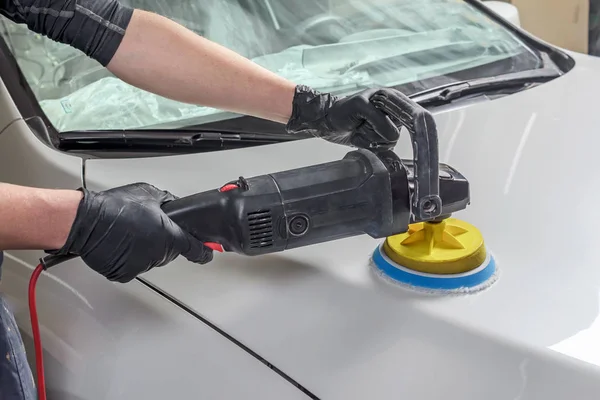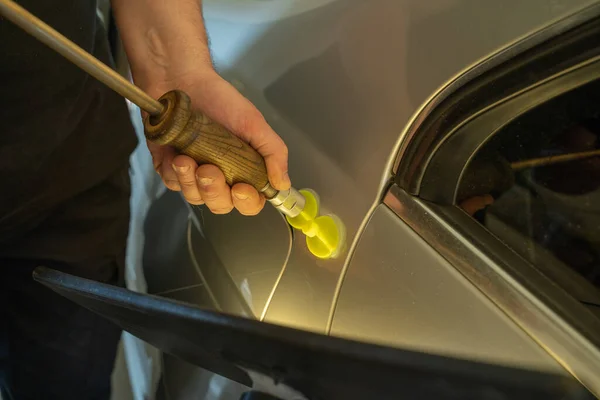Cost-Effective Dent Solutions: Why Paintless Dent Repair Is Worth It
Dents and dings on a vehicle can be a source of frustration for car owners. These imperfections not only mar the aesthetic appeal of a car but can also decrease its resale value. Traditional dent repair methods, while effective, can be costly and time-consuming. Enter Paintless Dent Repair (PDR) — a cost-effective, efficient, and increasingly popular solution that addresses these issues without the drawbacks of conventional methods.
This article explores why Paintless Dent Repair is worth considering for anyone looking to maintain the appearance and value of their vehicle without breaking the bank.
Understanding Paintless Dent Repair (PDR)
Paintless Dent Repair is a technique used to remove minor dents and dings from the body of a vehicle without affecting the original paint. The process involves using specialized tools to carefully push and massage the dented metal back into its original shape from behind the dent. This method preserves the factory paint job, which is critical for maintaining the vehicle’s appearance and value.

The Cost-Effectiveness of PDR
Lower Repair Costs
One of the most significant advantages of PDR is its cost-effectiveness. Traditional dent repair often involves sanding, filling, and repainting, which can be expensive due to the materials and labor involved. PDR, on the other hand, requires fewer materials and less labor, translating into lower costs for the consumer. The savings can be substantial, especially for minor dents and dings.
Preservation of Original Paint
Maintaining the original paint job is crucial for the resale value of a vehicle. Repainting, even when done professionally, can sometimes result in a mismatched color or noticeable differences in texture. PDR avoids these issues entirely by preserving the original paint. This not only keeps the car looking as good as new but also ensures that the value is not diminished due to repainting. Acquire knowledge on Paintless Dent Repair.
Time Efficiency
Time is money, and PDR is much faster than traditional dent repair methods. While conventional repairs might take days or even weeks, PDR can often be completed in a matter of hours. This quick turnaround means less inconvenience for the car owner and faster return to normal use of the vehicle.
Quality and Effectiveness
Excellent Results for Minor Dents
PDR is particularly effective for minor dents and dings, such as those caused by hail, minor collisions, or parking lot mishaps. The technique is highly precise, allowing for the restoration of the vehicle’s surface to its original condition without any noticeable signs of repair. When performed by a skilled technician, PDR can be virtually undetectable.
No Risk of Paint Mismatch
Since PDR does not involve repainting, there is no risk of paint mismatch. This is a common issue with traditional repairs, where even a slight difference in paint color or texture can be noticeable. By maintaining the original paint, PDR ensures a seamless repair that keeps the vehicle looking pristine.

Environmentally Friendly
PDR is also an environmentally friendly option. Traditional dent repair methods involve the use of fillers, paints, and other chemicals that can be harmful to the environment. PDR, however, requires no such materials, reducing the environmental impact of the repair process. For environmentally conscious consumers, this is a significant benefit.
Situations Where PDR May Not Be Suitable
While PDR is an excellent solution for many types of dents, it is not always suitable for all situations. Here are some scenarios where traditional repair methods might be necessary:
- Severe Damage: For severe dents or damage to the vehicle's frame, PDR may not be sufficient. Large dents that have caused significant structural damage will likely require more extensive repair techniques.
- Damaged Paint: If the paint has been cracked or chipped, PDR may not be the best option. In such cases, repainting will be necessary to restore the vehicle’s appearance.
- Complex Locations: Dents located in areas that are difficult to access, such as near the edges of panels or in reinforced sections, may be challenging to repair using PDR. Traditional methods might be more effective in these cases.
Choosing the Right PDR Technician
The effectiveness of PDR largely depends on the skill and experience of the technician performing the repair. Here are some tips for choosing the right PDR technician:
- Experience and Training: Look for a technician with extensive experience and proper training in PDR techniques. Skilled technicians are more likely to achieve excellent results without causing additional damage.
- Reputation and Reviews: Check online reviews and ask for recommendations from friends or family. A reputable technician will have positive feedback from satisfied customers.
- Certifications: Certifications from recognized industry organizations can also indicate a technician’s proficiency in PDR. These certifications often require rigorous testing and adherence to high standards.
Paintless Dent Repair offers a cost-effective, efficient, and environmentally friendly solution for minor dents and dings. By preserving the original paint and requiring less time and materials, PDR provides excellent value for car owners looking to maintain the appearance and value of their vehicles. While it may not be suitable for all types of damage, PDR is an excellent option for minor repairs and can often be completed in a fraction of the time and cost of traditional methods. When performed by a skilled technician, the results can be virtually indistinguishable from the original, making PDR a worthwhile investment for any car owner.

